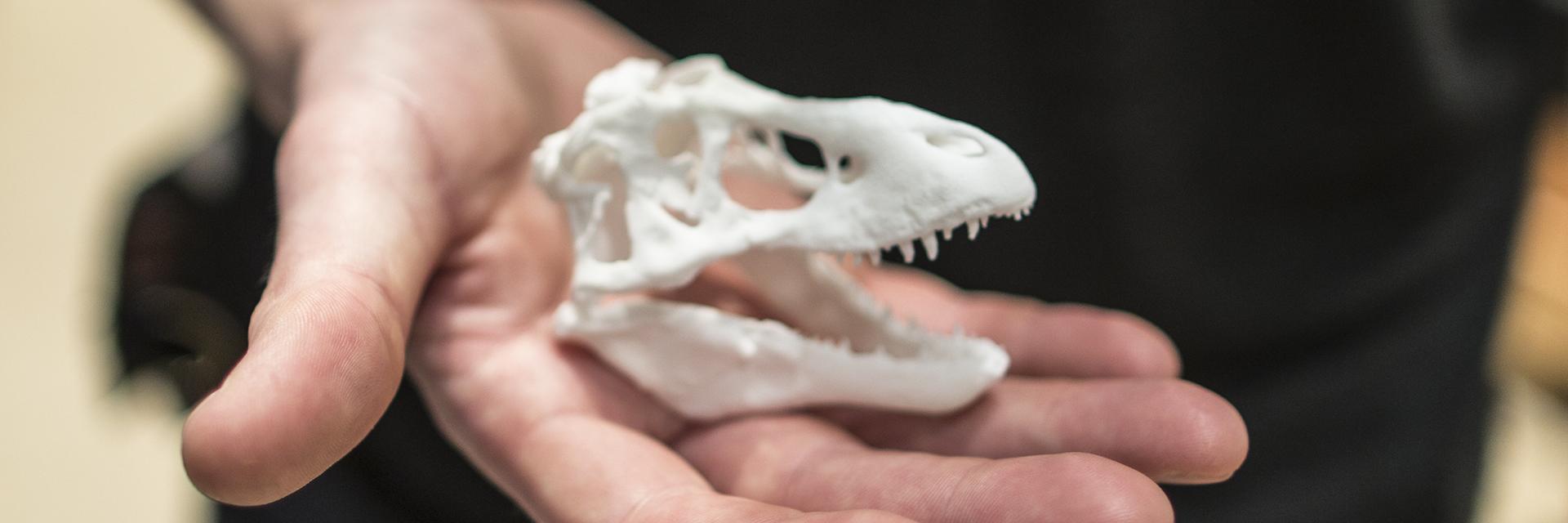By Günter Waibel, Director, Digitization Program Office, OCIO on Tue, 01/27/2015 - 12:06
Smithsonian X 3D brings museum collections to homes and classrooms by applying cutting-edge 3D technology to one-of-a-kind objects such as the 1903 Wright Flyer, Lincoln’s Life Masks, a 1500 year old Buddha sculpture, a prehistoric fossilized whale, or a Super Nova. The 3D models are presented online at 3D.SI.EDU through a plug-in free explorer based on WebGL, which was created for the Smithsonian by the 3D design firm Autodesk.
The unique explorer turns online visitors into active investigators: they can manipulate the data to draw out hard-to-read details such as low-relief carvings on the Buddha (see also this video); investigate cross-sections to reveal the interior of the revolutionary Wright Flyer engine; take measurements to determine the dimensions of a whale vertebrae; and compare different models, such as the two Lincoln Life Masks, through a split-screen.
The 3D models can also be embedded on other websites through an iFrame embed code (just like a YouTube video) as seen below:
Full datasets of the models can be downloaded, which empowers anyone with a 3D printer to create replicas. A community college in Houston 3D printed the life-mask of Abraham Lincoln (capturing the President’s facial features weeks before he was assassinated) on the 150th anniversary of the Gettysburg address to allow students the experience of tracing the deep furrows on the President’s face. "When you hold an object like this in your hands, you get an entirely new perspective on the history around it," a college official was quoted as saying.
Inspired by the impact of the 3D data from the Lincoln Life Masks, a Smithsonian-led team bringing together expertise from the University of Southern California’s Institute for Creative Technologies, Autodesk and 3D Systems, created the first 3D Portrait of a sitting President on June 9th 2014, as documented in this White House video and Smithsonian blog. The resulting life-sized 3D printed bust of President Obama was first displayed as part of the White House Maker Faire on June 18th 2014, and will be accessioned into the Smithsonian’s National Portrait Gallery.
In addition to bringing to live history, Smithsonian X 3D content also holds great promised for STEM education. Difficult concepts like aerodynamics become vital and real when achieving the world’s first sustained, powered flight depends on an innovative wing shape which is further explained by National Air & Space Museum chief curator Dr. Peter Jakab on a guided tour of the Wright Flyer. Being able to investigate a 3D model of a Super Nova creates an opening to discuss how the death of stars fuels the creation of planets, and ultimately plays a role in the chemical chain reaction laying the foundation for life itself. As 3D models, Smithsonian collection items and scientific explorations become the scaffolding for telling stories about science, technology, engineering and math.
Smithsonian X 3D evokes the marvel of a 167 year old museum complex going head-to-head with the most cutting edge 21st century technology. Moreover, this project indicates that 3D technology has the potential not only to support the Smithsonian mission, but to transform core functions at museums around the globe. Researchers working in the field may not come back with specimens, but with 3D data documenting a site or a find. Curators and educators can use 3D data as the scaffolding to tell stories or send students on a quest of discovery. Conservators can benchmark today’s condition state of a collection item against a past state – a deviation analysis of 3D data will tell them exactly what changes have occurred.
Given the compelling educational use cases, as well as the transformative ways in which 3D technology can support Smithsonian staff in performing their day-to-day work, the Smithsonian’s Digitization Program Office currently investigates how to increase the rate of 3D capture, and reduce the significant and highly variable per-item costs of 3D digitization and post-processing. Among the upcoming data releases will be the a 3D model of the Nation’s T-Rex, which was scanned bone-by-bone (over 200 of them) in full public view to support Smithsonian scientists in designing the scientifically accurate pose for the specimen when it goes on display in a re-modeled dinosaur hall in 2019.
For more information, see these videos from the Smithsonian’s Digitization Program Office YouTube channel introducing Smithsonian X 3D, as well as various individual projects:
Smithsonian X 3D Overview http://youtu.be/TcjO_VY5lcI
What is 3D scanning? http://youtu.be/CkoEbnxxXXg
Conservation showcase http://youtu.be/6ij4WtocR2U
Education showcase http://youtu.be/SOo9WVuUmtc
Lincoln Life Masks http://youtu.be/otzMtMu4tPU
Fossil Whales http://youtu.be/qRLZ29mLdSQ
Gunboat Philadelphia http://youtu.be/9NVyRf1C9u0
(This story was first published in the In Brief section of the January/February 2015 issue of D-Lib Magazine )
